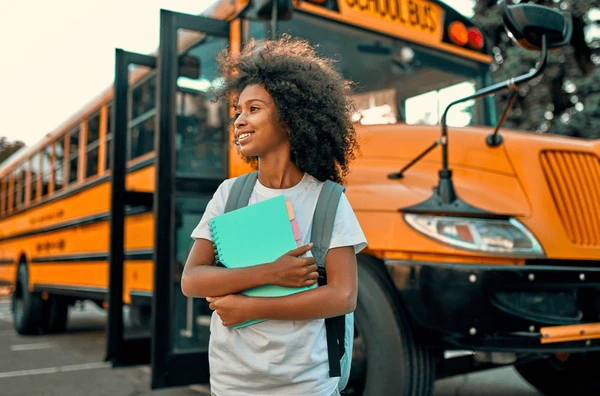In an age where information is abundant and easily accessible, the ability to discern credible news from misinformation has become paramount. News literacy, the understanding of how to critically evaluate news sources and content, is essential for fostering informed citizens capable of navigating the complexities of modern media. This article explores the importance of news literacy, its role in developing critical thinking skills, and practical strategies for enhancing news literacy through study and analysis.
The Importance of News Literacy

1. Navigating Information Overload
The digital age has led to an overwhelming influx of information from various sources.
- Volume of Information: With social media, blogs, and online news platforms, individuals are bombarded with news stories daily. This saturation can make it challenging to identify reliable information.
- Misinformation and Disinformation: The prevalence of fake inca berita and misleading information complicates the landscape. Understanding how to evaluate sources and claims is crucial for distinguishing fact from fiction.
2. Empowering Informed Citizens
News literacy equips individuals with the skills necessary to engage critically with the media.
- Informed Decision-Making: Being able to assess the credibility of news sources allows individuals to make informed decisions on important issues, such as politics, health, and social justice.
- Civic Engagement: A well-informed citizenry is essential for a functioning democracy. News literacy encourages active participation in civic life, from voting to community advocacy.
3. Fostering Critical Thinking Skills
Developing news literacy inherently involves cultivating critical thinking skills.
- Analytical Skills: Evaluating news sources requires analytical thinking—assessing arguments, identifying biases, and recognizing logical fallacies.
- Skepticism and Curiosity: A critical thinker approaches information with a healthy skepticism, questioning the validity of claims and seeking evidence before forming opinions.
Components of News Literacy
1. Understanding Media Literacy
Media literacy is the foundation of news literacy, encompassing the skills needed to analyze and evaluate media content.
- Media Formats and Genres: Understanding different media formats (e.g., news articles, opinion pieces, advertisements) helps individuals recognize the purpose and intent behind various types of content.
- Media Production: Awareness of how news is produced—including editorial decisions, funding sources, and target audiences—can influence how one interprets and evaluates news stories.
2. Evaluating Sources
Critical evaluation of sources is a key component of news literacy.
- Credibility Assessment: Individuals should assess the credibility of sources by considering factors such as the author’s qualifications, the publication’s reputation, and the presence of peer review.
- Cross-Referencing: Verifying information by cross-referencing multiple reputable sources helps to ensure accuracy. If a story is reported by several credible outlets, it is more likely to be reliable.
3. Identifying Bias and Perspective
Recognizing bias in news reporting is essential for developing a nuanced understanding of issues.
- Types of Bias: Familiarity with different types of bias—such as political, commercial, and cultural—enables individuals to critically assess how these biases may influence news coverage.
- Diverse Perspectives: Engaging with a variety of viewpoints helps to counteract confirmation bias, where individuals seek out information that confirms their existing beliefs. Exposure to diverse perspectives fosters a more comprehensive understanding of complex issues.
Strategies for Enhancing News Literacy
1. Educational Programs
Implementing educational initiatives focused on news literacy can significantly enhance critical thinking skills.
- Curriculum Development: Schools and universities can develop curricula that incorporate news literacy as a core component of education. This can include lessons on evaluating sources, understanding media bias, and analyzing news content.
- Workshops and Seminars: Community organizations can offer workshops to teach individuals how to critically engage with news media. These sessions can provide practical tools and strategies for evaluating information.
2. Practical Exercises
Engaging in practical exercises can reinforce news literacy skills.
- Source Evaluation Assignments: Students can be tasked with evaluating the credibility of different news sources, analyzing their strengths and weaknesses. This hands-on approach encourages critical thinking.
- Debate and Discussion: Facilitating debates on current events allows individuals to articulate their viewpoints while considering opposing perspectives. This practice cultivates critical thinking and enhances communication skills.
3. Digital Tools and Resources
Utilizing digital tools can support the development of news literacy.
- Fact-Checking Websites: Resources such as Snopes, FactCheck.org, and PolitiFact provide valuable tools for verifying claims made in news stories. Encouraging individuals to use these resources fosters a culture of skepticism and verification.
- News Literacy Apps: Several apps are designed to help users evaluate news sources and identify misinformation. Incorporating these tools into daily news consumption can enhance critical thinking skills.
4. Encouraging Media Consumption Habits
Promoting healthy media consumption habits is essential for developing news literacy.
- Diversifying News Sources: Encouraging individuals to seek news from a variety of sources—local, national, and international—helps to broaden perspectives and reduce echo chambers.
- Mindful Consumption: Practicing mindful consumption involves being aware of one’s media habits and actively questioning the information encountered. This can include taking breaks from social media or setting limits on news consumption to avoid information overload.
The Role of Educators and Media Professionals
1. Educators
Teachers and educators play a crucial role in fostering news literacy among students.
- Integrating News Literacy into Curriculum: Educators can incorporate news literacy into existing subjects, emphasizing the importance of critical thinking in all areas of knowledge.
- Modeling Critical Thinking: Educators can model critical thinking skills by analyzing news stories in the classroom, demonstrating how to evaluate sources and identify bias.
2. Media Professionals
Journalists and media professionals have a responsibility to promote news literacy.
- Transparency in Reporting: Media organizations can enhance credibility by being transparent about their sources, methodologies, and potential conflicts of interest.
- Public Engagement: Journalists can engage with the public through workshops, Q&A sessions, and social media to educate audiences about responsible news consumption and the importance of critical thinking.
Conclusion
News literacy is an essential skill in today’s information-rich environment, enabling individuals to navigate the complexities of modern media with confidence and discernment. By fostering critical thinking through study and analysis, we can empower citizens to become informed participants in civic life.
Educational initiatives, practical exercises, and the responsible actions of educators and media professionals are vital in promoting news literacy. As individuals develop the skills to critically evaluate news sources and content, they contribute to a more informed and engaged society.
Read Also About Writing is an essential skill for communicating ideas, information, and emotions clearly and effectively. Whether for academic purposes, professional communication, or creative expression, strong writing skills can make a significant difference in how your message is received.


